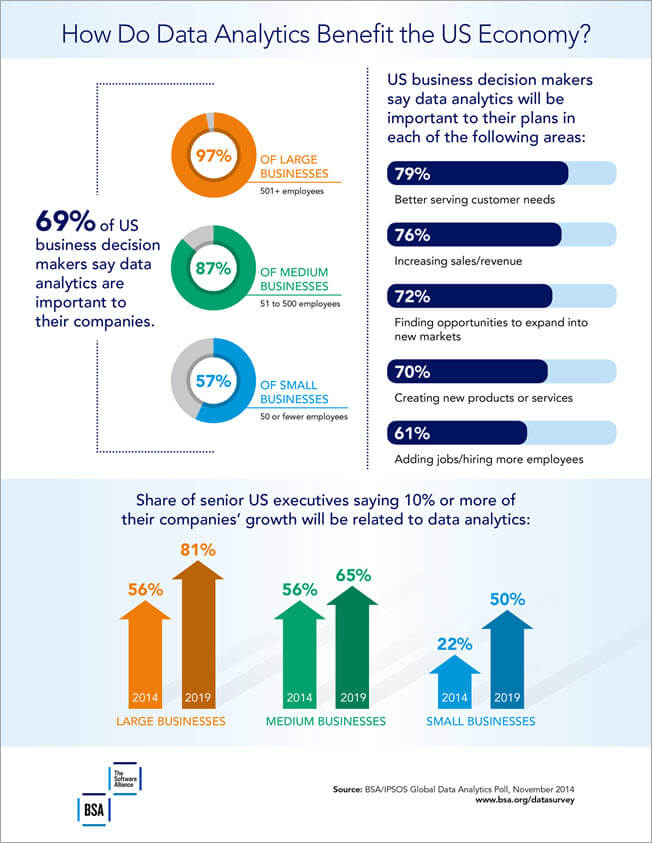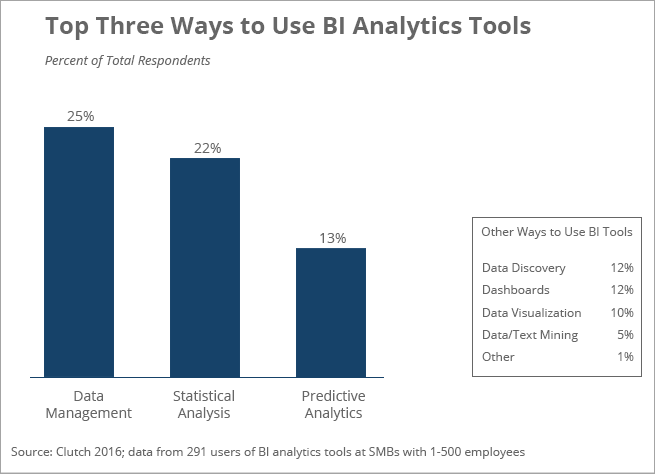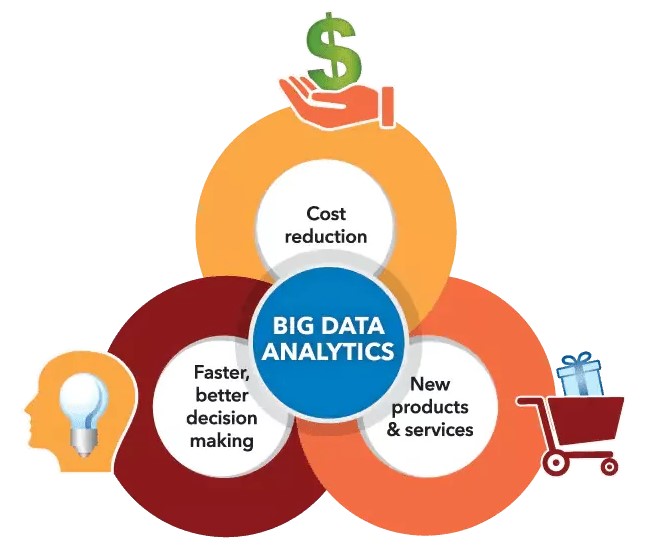Data Analytics is the process of transforming or changing the present data to obtain a clearer picture of that particular process or element.
Information and Data Analytics allow the staff to look at the information in a particular context and create smarter business choices to attain improved products and services.
According to market research and survey, Big Data Analytics is adopted by over 53% of the companies in the year 2017 and it has increased by 11% in the year 2021.
The usage of advanced analytical processes for Business automation and Task optimization is more in 2021. It’s no surprise that information analytics has become a crucial tool across various organizations worldwide.

[image source]
E-commerce sales are projected to grow by a vast proportion by the year 2021. 72% of companies rely on the fact that big data analysis will help in improving customer experience to a huge extent.
Big data analytics helps in identifying fraud and payment errors. By the year 2025, almost all the industries will be dependent upon data analytical systems.
The below image shows the top three ways to use the BI Analytics Tool.

[image source]
Expert Advice: While choosing a data analytics solution you should identify the high and low priorities, match the solution with your needs, and research your business needs. Sharing your ideas and getting feedback from the stakeholders will help you to find the solution that will be more agile and highly adopted.
You can also consider the following points while choosing the tool:
Level of technical expertise of the available employees/staff.
Decide the degree of data analytics that you are expecting from the tool.
The data analysis process needs to follow certain steps from researching the whole scenario to its execution. A certain plan has to be designed as the data differs from one company to another.
The methods required, the amount of data available, and the time taken are the major factors that are to be considered. Lastly, evaluation is important for knowing the results or setbacks in the organization.
What Every Big Data Analytics Strategy Should Have
A well defined, integrated, and comprehensive strategy contributes to and supports valuable data-driven decision-making in an organization. In this section, we have listed the most critical steps that needs to be considered when defining a big data analytics strategy.
Step 1: Assessment
An assessment, already aligned with business objectives, requires involving key stakeholders, creating a team of members with the right skill set, evaluate policies, people, process, and technology & data assets. If required, one can involve customers of the assessed in this process.
Step 2: Prioritization
After the assessment, one needs to derive use cases, prioritize them using big data predictive analytics, prescriptive analytics, and cognitive analytics. You can also use a tool such as the prioritization matrix and further filter the use cases with the help of feedback and input from key stakeholders.
Step 3: RoadMap
In this step, it is required to create a time-bound roadmap and publish it for everyone. A roadmap needs to include all the details regarding complexities, funds, inherent benefits of the use cases, and mapped projects.
Step 4: Change Management
Implementing change management requires one to manage data availability, integrity, security, and usability. An effective change management program, using any existing data governance, incentivizes activities, and members based on continuous monitoring.
Step 5: Right Skill Set
Identifying the right skill set is crucial to the organization’s success amid current trends in the industry. Therefore, one needs to follow the right leaders and bring educational programs to educate critical stakeholders.
Step 6: Reliability, Scalability & Security
The right approach and effective big data analytics strategy make the analytics process reliable, with effective use of interpretable models involving data science principles. A big data analytics strategy needs to also include aspects of security right from the beginning for a robust and tightly integrated analytics pipeline.
Data Pipeline And Process For Data Analytics
When planning for the data analytics pipeline, there are three fundamental aspects one needs to consider. These are as follows:
- Input: Data format and selection of technology to process, it is based on data’s underlying nature. i.e. whether data is time-series and quality.
- Output: Choice of connectors, reports, and visualization depends on the technical expertise of end-users and their data consumption requirements.
- Volume: Scaling solutions are planned based on the volume of data to avoid overloading on the big data processing system.
Conclusion
We covered the most important aspects of big data analytics. We explained the most prevalent use cases and the trends in the big data analytics industry to reap maximum benefits.


